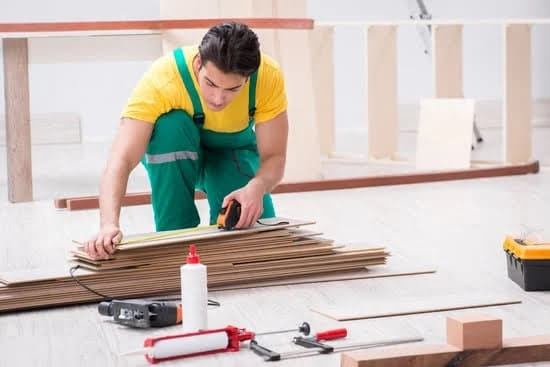Are you looking to upgrade your outdoor living space? Building your own patio table can be a rewarding and fulfilling project that not only adds a personal touch but also saves you money. In this article, we will provide you with the necessary woodworking plans to guide you through the construction process.
Discover the benefits of building your own patio table and be inspired by the endless design options available. But before we delve into the details, did you know that woodworking has been proven to reduce stress levels and improve mental focus? Whether you are a seasoned woodworker or just starting out, let’s explore the world of patio table woodworking plans together.
A well-crafted patio table plays an essential role in any outdoor living space. It serves as a gathering place for family and friends, providing both functionality and versatility. From hosting barbecues to enjoying morning coffees, a sturdy and durable patio table is vital in creating unforgettable memories. With various weather conditions to contend with, it is crucial to choose materials that can withstand the elements without compromising on style or comfort.
When it comes to choosing the right wood for your patio table, several factors should be taken into consideration. Different types of wood offer varying levels of durability, aesthetics, and cost-effectiveness. It is important to select wood that not only complements your outdoor aesthetic but also meets your specific needs. In this article, we will discuss popular wood choices for patio table construction and provide recommendations and tips on selecting the most suitable option for your project.
Before embarking on your patio table woodworking journey, it is important to gather all the necessary tools and materials required for construction. Various saws, drills, screws, sandpaper, sealants, and more will be needed during the building process. Having all these items readily available ensures efficient progress throughout each step of construction. We will provide a comprehensive list of tools and materials needed as well as recommendations on where they can be purchased.
Now that you have an overview of what to expect in this article, it’s time to roll up your sleeves and dive into the exciting world of patio table woodworking plans. In the following sections, we will guide you through each step of the construction process, provide safety measures, and discuss customization options and maintenance techniques for your new patio table. Let’s get started.
Importance of Having a Well-Crafted Patio Table
A well-crafted patio table is an essential component of any outdoor living space. It serves various purposes and offers both functionality and versatility. Whether you use it for hosting outdoor gatherings, enjoying meals with family and friends, or simply relaxing with a book and a cup of coffee, a sturdy and durable patio table is a valuable addition to your outdoor furniture collection.
One of the key roles of a patio table is to provide a surface for dining and entertaining. It creates a gathering space where people can come together to enjoy meals, chat, or play games. A well-built table ensures that everyone has enough room to sit comfortably and that there is ample space for food, drinks, and utensils.
In addition to its practicality in serving as a dining area, the patio table also adds aesthetic appeal to your outdoor space. It acts as a centerpiece and can enhance the overall design theme of your patio or deck.
Another important aspect of having a well-crafted patio table is its ability to withstand different weather conditions. Outdoor furniture is exposed to various elements such as rain, sunlight, wind, and even snow depending on your location. Therefore, it is crucial to choose materials that are durable and can withstand these weather conditions without deteriorating or losing their structural integrity. Additionally, having a properly sealed table can protect it from moisture damage and extend its lifespan.
When selecting wood for your patio table, there are several options available each with their own pros and cons. Common types of wood used in patio table construction include cedar, teak, redwood, pine, and oak. Cedar wood is known for its natural resistance against rotting and insect damage which makes it ideal for outdoor furniture. Teak wood is another popular choice due to its natural oils that make it highly resistant to moisture damage as well as its durability.
Redwood offers similar benefits but tends to be more expensive. Pine provides an affordable option but may require regular maintenance such as sealing and staining to protect it from the elements. Oak is a sturdy and durable hardwood that can withstand harsh weather conditions but may require additional protection such as sealants or varnishes.
Choosing the Right Wood for Your Patio Table
Types of Wood
When it comes to building a patio table, choosing the right type of wood is crucial. Different woods have unique characteristics that can impact the durability, aesthetics, and overall performance of your table. Here are some common types of wood used in patio table construction:
- Cedar: Known for its natural resistance to decay and insects, cedar is an excellent choice for outdoor furniture. It has a beautiful reddish-brown color that ages gracefully over time. However, cedar can be more expensive than other options.
- Teak: Teak is highly prized for its exceptional durability and natural resistance to decay and insects. It has a stunning golden-brown color and is known to withstand extreme weather conditions. Keep in mind that teak can be quite expensive.
- Redwood: Redwood is another popular choice for patio tables due to its excellent resistance to rot, decay, and insects. It has a gorgeous reddish shade that adds warmth to any outdoor space. Similar to cedar, redwood can be on the pricier side.
- Pressure-Treated Pine: Pressure-treated pine is a cost-effective option that offers decent durability and resistance to outdoor elements. The wood is infused with chemicals that make it resistant to rot and insects. However, keep in mind that pressure-treated pine requires regular maintenance and refinishing.
Choosing the Right Wood
When selecting the most suitable wood for your patio table project, consider factors such as budget, desired aesthetic appeal, climate conditions in your area, and maintenance requirements. If you live in a wet or humid environment, opt for woods like cedar or teak due to their natural moisture resistance properties.
If you’re on a tight budget but still want a durable option, pressure-treated pine can be an affordable alternative if properly maintained. Remember that regular cleaning, sealing, and refinishing will help prolong the lifespan of any wooden patio table.
Additionally, consider the overall style and aesthetic of your outdoor space. Some wood types, like redwood and cedar, offer distinct natural colors and textures that can complement different design themes. Don’t be afraid to seek advice from experts at your local hardware store or consult online resources for more information on selecting the perfect wood for your patio table.
With the right choice of wood, you can ensure that your patio table not only withstands the test of time but also enhances the beauty and functionality of your outdoor living area.
Essential Tools and Materials Needed
Gather the Necessary Tools
Before starting your patio table woodworking project, it is important to gather all the essential tools needed for construction. The following is a comprehensive list of tools that will be required:
- Saw: A saw will be necessary for cutting the wooden boards to the desired size and shape. A circular saw or a miter saw are both suitable options for this task.
- Drill: A drill is an essential tool for creating holes in the wood, which will be necessary for attaching screws and other fasteners.
- Screwdriver: Depending on your preference, either a traditional handheld screwdriver or a power screwdriver can be used to drive screws into the wood.
- Sandpaper: To create smooth surfaces on the wooden components of your patio table, sandpaper of various grits should be used. Coarse grits are best for initial sanding, while finer grits should be used for finishing touches.
- Sealants: Applying sealant to your finished patio table will help protect it from moisture and extend its lifespan. Consider using a weather-resistant sealant suitable for outdoor use.
Purchase Quality Materials
In addition to tools, you will also need to acquire high-quality materials for your patio table construction. Here are some key materials you should consider:
- Wooden Boards: The type of wood you choose will depend on your desired aesthetic and durability requirements. Popular woods used for building patio tables include cedar, teak, and oak. Make sure to select wooden boards that are properly sized and shaped according to your chosen design.
- Screws and Fasteners: High-quality screws that are appropriate for outdoor use should be selected. Stainless steel screws are recommended as they are resistant to rust and corrosion.
- Paints and Finishes (Optional): If you wish to add color or aesthetic appeal to your patio table, consider purchasing paints or finishes that are specifically designed for exterior use. These can be used to add a protective layer to the wood as well.
When purchasing tools and materials, it is advisable to visit a reputable hardware store or retailer specializing in woodworking supplies. Online retailers also offer a wide range of options and can provide convenient delivery straight to your door.
By ensuring that you have all the necessary tools and materials before starting your patio table woodworking project, you will be better prepared for a successful and enjoyable construction process.
Step-by-Step Construction Process
Building a patio table with woodworking plans requires careful attention to detail and precision. By following a step-by-step construction process, even novice woodworkers can successfully build their own functional and beautiful patio table.
- Gather all the necessary materials and tools before starting the construction process. This includes wood, saws, drills, screws, sandpaper, sealants, and any other items specified in the woodworking plan.
- Begin by cutting the wooden boards according to the dimensions provided in the plans. Use a saw to make precise cuts, ensuring that all pieces are of equal length and width.
- Next, assemble the frame of the patio table by attaching the legs to the tabletop using screws or other fastening methods specified in the plans. It is important to ensure that all joints are secure and sturdy.
- Once the frame is complete, add additional support beams or cross braces as needed for stability. These can be attached using screws or other recommended methods.
- Sand all surfaces of the patio table to smooth out any rough edges or imperfections. Start with coarse-grit sandpaper and gradually switch to finer grits for a polished finish.
- Apply a sealant or finish to protect the wood from outdoor elements such as moisture, sunlight, and pests. Follow manufacturer’s instructions when applying these products and allow sufficient drying time between coats if multiple applications are required.
- Optional: Add any desired design elements such as decorative trim or engravings to personalize your patio table.
- The final step is to attach any additional features such as an umbrella hole or storage compartments according to your preference.
By carefully following each step of the construction process outlined in your chosen woodworking plan, you can create a customized patio table that suits your outdoor space perfectly while showcasing your woodworking skills.
Safety Measures During Construction
When it comes to woodworking projects, safety should always be a top priority. To ensure a smooth and accident-free construction process for your patio table, it is important to practice proper safety measures. By taking the necessary precautions and wearing the right protective gear, you can minimize the risk of injuries and create a secure working environment. Here are some essential safety measures to keep in mind:
- Use Protective Gear: Before starting any woodworking project, make sure to wear the appropriate protective gear. This includes safety glasses or goggles to protect your eyes from dust, wood chips, or flying debris. Additionally, gloves can provide protection from splinters and sharp tools.
- Work in a Well-Ventilated Area: Setting up your workspace in a well-ventilated area is crucial for both your health and safety. Proper ventilation helps to eliminate harmful fumes from materials like sealants or paints and prevents build-up of airborne particles that can cause respiratory issues.
- Practice Proper Tool Handling: Always handle your tools with care and exercise caution when using them. Keep blades sharp as dull blades can lead to accidents due to increased force needed while cutting wood. Moreover, make sure to use tools only for their intended purpose and do not force them beyond their capabilities.
- Secure Your Workpiece: To avoid injuries caused by slips or movement of the workpiece during construction, secure it properly using clamps or vice grips. This will ensure stability while cutting or drilling into the wood.
- Follow Electrical Safety Guidelines: If your woodworking project requires power tools like drills or saws, it is crucial to observe electrical safety guidelines. Ensure that all cords are in good condition without any fraying or exposed wires. Additionally, use grounded outlets or extension cords with built-in GFCI (Ground Fault Circuit Interrupter) protection.
- Keep Your Workspace Clean: Maintaining a clean workspace is not just for aesthetics but also for safety reasons. A clutter-free work area reduces the risk of tripping over tools or materials and minimizes fire hazards caused by sawdust accumulation.
By following these safety measures, you can create a secure environment for your patio table woodworking project. Remember to prioritize safety at all times, as it is the foundation of a successful and enjoyable woodworking experience.
Customization and Design Options
When it comes to building your own patio table, one of the exciting aspects is the opportunity to customize and design it to fit your personal preferences and outdoor aesthetics. Whether you prefer a rustic farmhouse look or a sleek modern style, there are countless design options available to create a patio table that perfectly complements your outdoor space.
One way to add your personal touch is through the choice of finishes, paints, and stains. Depending on the type of wood used for your patio table, you can enhance its natural beauty by applying a clear coat or sealant that protects the wood while still showcasing its grain and texture. Alternatively, you can opt for various colored stains or paints to add a pop of color or blend it seamlessly with your existing outdoor décor.
Another way to customize your patio table is by considering its shape and size. While rectangular tables are common, you might prefer a round or square design depending on the shape of your patio or deck. Additionally, consider whether you want a fixed table or one with adjustable components, such as extendable leaves or folding sides for easy storage.
Incorporating unique features into your patio table can also make it stand out. For example, you could add built-in planters along the edges to bring greenery closer to your dining area. Another option is integrating ice troughs in the center of the table for keeping beverages cool during outdoor gatherings.
Ultimately, the only limit to customizing and designing your own patio table is your imagination. By exploring different design options and considering how they fit with your overall vision for an inviting outdoor space, you can create a truly unique and personalized centerpiece that reflects your style and creativity.
Customization and Design Options
When it comes to building your own patio table, one of the exciting aspects is the opportunity to customize and design it to fit your personal preferences and outdoor aesthetics. Whether you prefer a rustic farmhouse look or a sleek modern style, there are countless design options available to create a patio table that perfectly complements your outdoor space.
One way to add your personal touch is through the choice of finishes, paints, and stains. Depending on the type of wood used for your patio table, you can enhance its natural beauty by applying a clear coat or sealant that protects the wood while still showcasing its grain and texture. Alternatively, you can opt for various colored stains or paints to add a pop of color or blend it seamlessly with your existing outdoor décor.
Another way to customize your patio table is by considering its shape and size. While rectangular tables are common, you might prefer a round or square design depending on the shape of your patio or deck. Additionally, consider whether you want a fixed table or one with adjustable components, such as extendable leaves or folding sides for easy storage.
| Design Options | Description |
|---|---|
| Finishes, Paints, and Stains | Select from clear coats, sealants, colored stains, or paints to protect and enhance the appearance of the wood. |
| Shape and Size | Choose among rectangular, round, square tables based on personal preference and available space. |
| Unique Features | Add built-in planters or ice troughs for added functionality and visual interest. |
Maintenance and Care for a Long-Lasting Patio Table
The longevity of a patio table greatly depends on how well it is maintained and cared for. Proper maintenance techniques are essential to ensure that the table remains in good condition and can withstand the outdoor elements. This section will discuss important tips and guidelines for cleaning, protecting, and repairing a patio table to ensure its long-lasting durability.
Cleaning the patio table regularly is crucial to remove dirt, debris, and stains that may accumulate over time. Use mild soap or a wood cleaner along with a soft brush or cloth to gently scrub the surface of the table. Avoid using harsh chemicals or abrasive materials as they can cause damage to the wood finish. Rinse thoroughly with water and dry the table completely before applying any protective coatings.
Protecting the patio table from moisture, sunlight, and other environmental factors is vital in preserving its appearance and structural integrity. Applying a sealant or waterproofing product specifically designed for outdoor wood furniture can help prevent water damage, rotting, and warping. Be sure to follow the manufacturer’s instructions when applying these products.
Regularly inspecting the patio table for any signs of damage or wear is necessary to address potential issues promptly. Repair any loose screws or nails, replace damaged boards, and sand down any rough edges or splinters. It is also recommended to periodically tighten bolts or hardware connections to ensure stability.
In addition to routine maintenance tasks, it is crucial to establish a maintenance schedule based on various factors such as climate conditions and frequency of use. For example, tables exposed to harsh weather conditions may require more frequent maintenance compared to those placed under covered patios or used infrequently.
| Maintenance Task | Frequency |
|---|---|
| Cleaning | Every 1-2 months |
| Applying sealant or protective coating | Every 6 months to 1 year |
| Inspecting for damage or wear | Every 3-6 months |
By following these maintenance tips and establishing a regular care routine, a patio table can maintain its beauty and functionality for many years to come. Taking the time to properly care for the table will enable it to withstand various weather conditions and continue being a focal point in outdoor living spaces.
Conclusion
In conclusion, building your own patio table through woodworking plans offers numerous benefits that are worth considering. A well-crafted patio table serves as an essential element in outdoor living spaces, providing functionality and versatility for various activities and gatherings. It is crucial to choose the right wood for your patio table, considering factors such as durability, aesthetics, and cost. Additionally, having the necessary tools and materials is essential for a successful construction process.
Ensuring safety measures during the construction of your patio table is of utmost importance. Practicing safety precautions such as wearing protective eyewear and gloves can prevent accidents and injuries. By following the step-by-step construction process outlined in this article, readers can successfully build their own patio table while customizing it to fit their preferences and outdoor aesthetics.
Proper maintenance techniques are vital for preserving the longevity of your patio table. Cleaning, protecting, and repairing the table regularly will help maintain its appearance and structural integrity over time.
Encouraging readers to embark on their own patio table woodworking project serves as a call-to-action, fostering a sense of creativity and achievement in DIY enthusiasts. By subscribing to a newsletter or sharing this article with friends who may be interested in woodworking, readers can continue to explore new projects and learn valuable skills in this field.

Hi everyone! I’m a woodworker and blogger, and this is my woodworking blog. In my blog, I share tips and tricks for woodworkers of all skill levels, as well as project ideas that you can try yourself.





